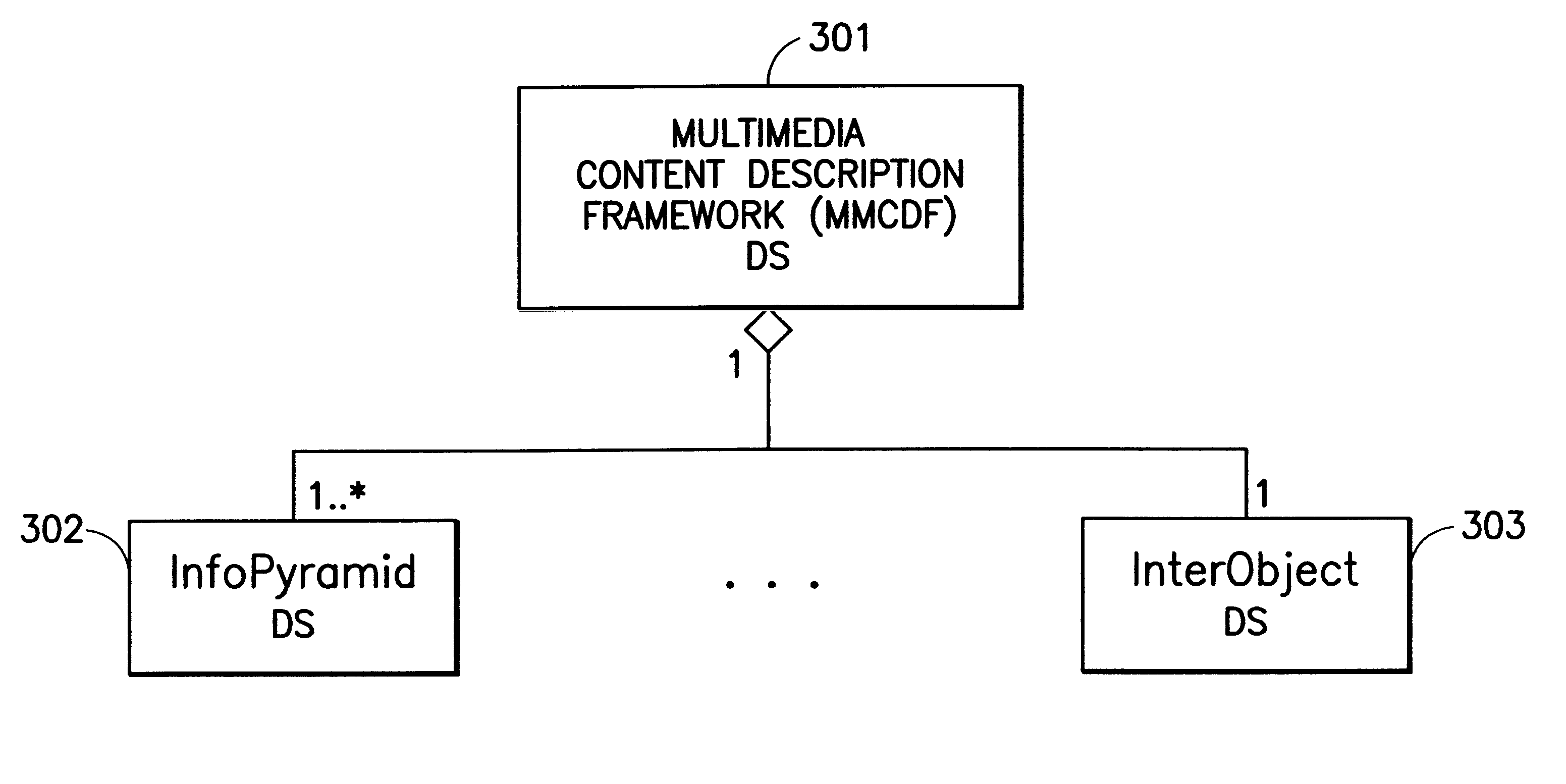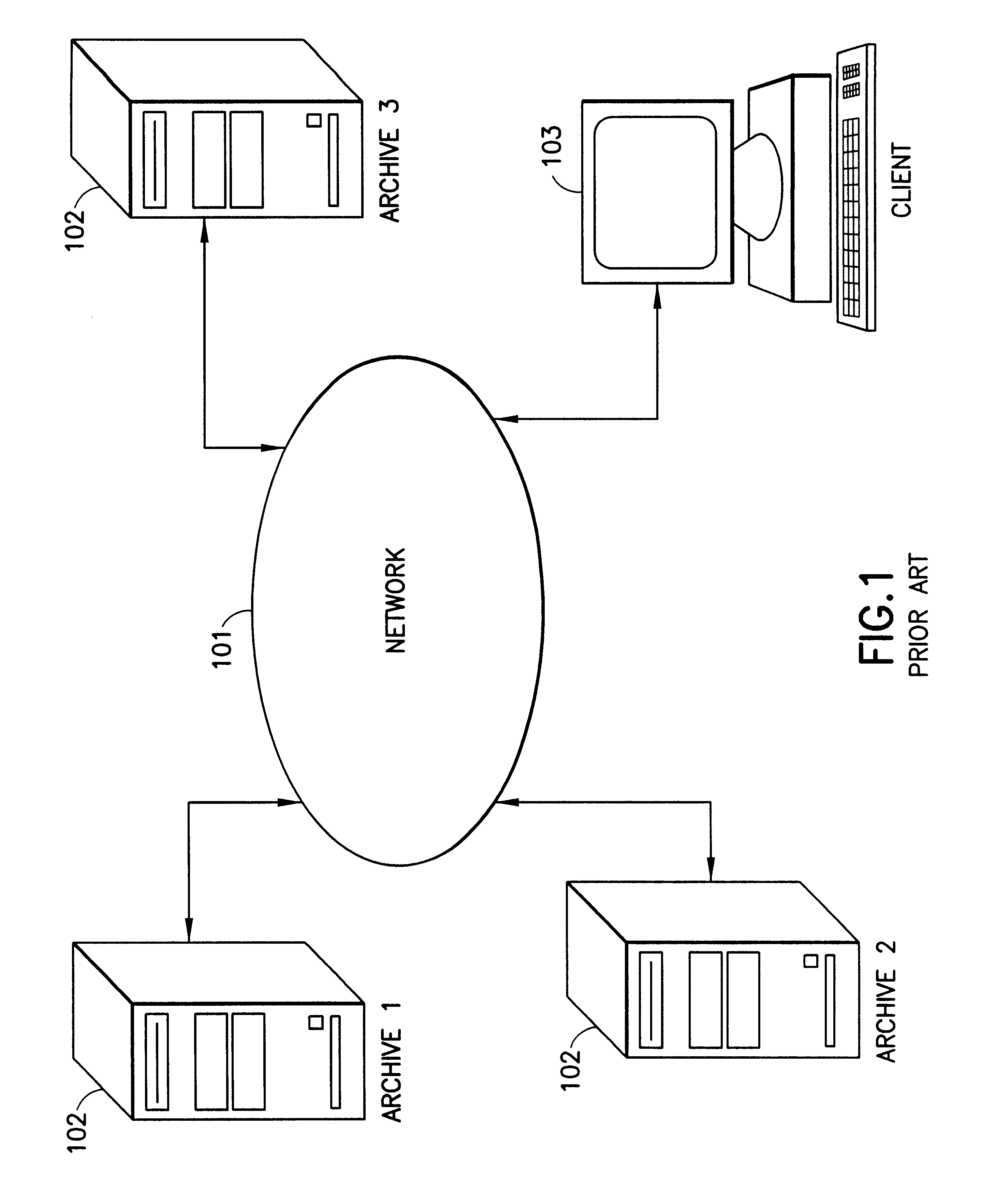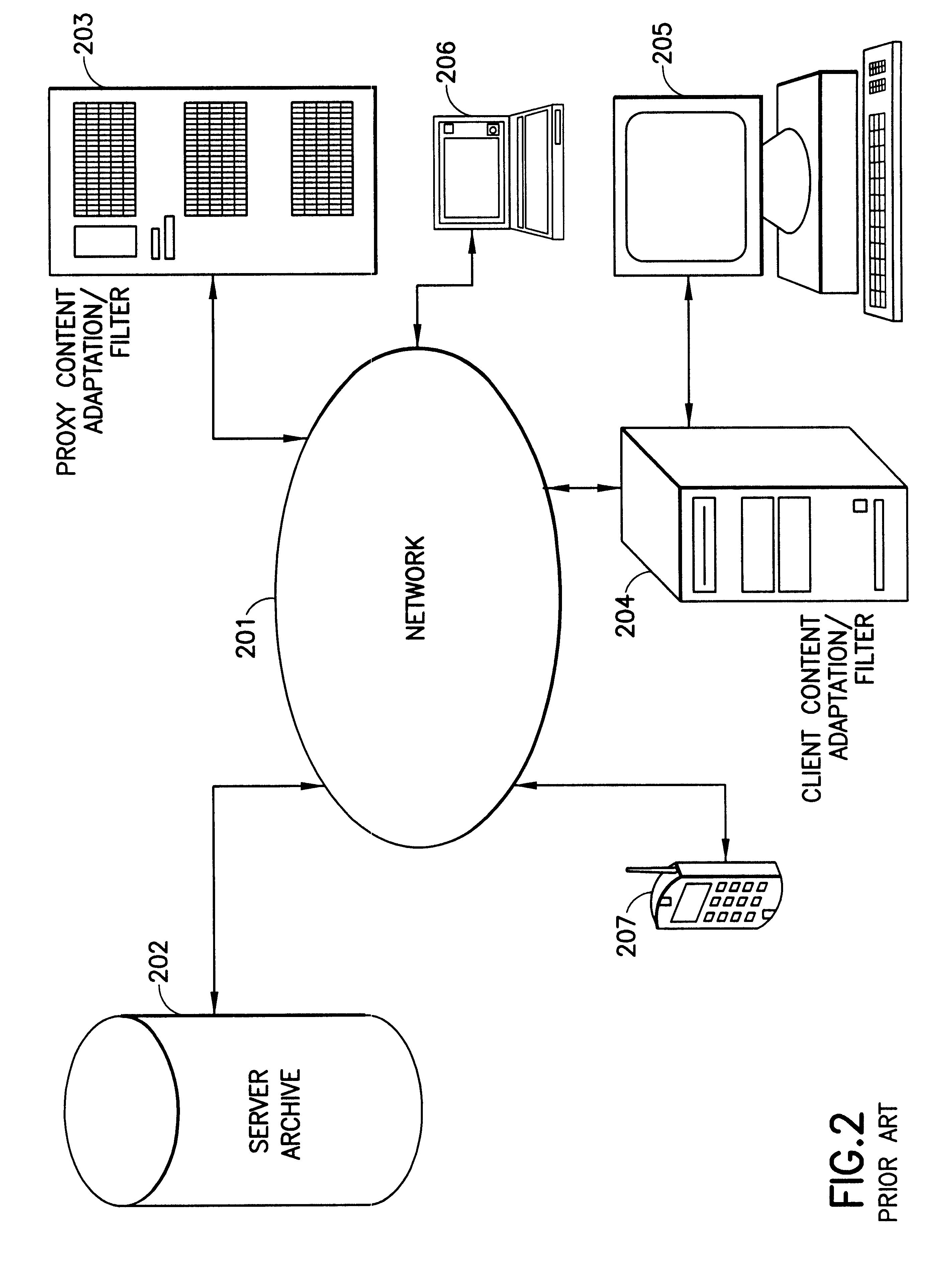Multimedia content description framework
a content description and multimedia technology, applied in the field of multimedia content description system, can solve the problems of inability to describe legacy and proprietary holdings in a standard way, become increasingly difficult to search specific information, and lack of tools to support targeted exploration of audio-visual archives
- Summary
- Abstract
- Description
- Claims
- Application Information
AI Technical Summary
Problems solved by technology
Method used
Image
Examples
example 2
Satellite Image Retrieval System
In a preferred content-based retrieval system of satellite images, image content is represented as an InfoPyramid with four modalities: (1) Pixel, or the original image (2) Feature (3) Semantic and (4) Metadata.
The present invention distinguishes between simple and composite objects. A simple object can be defined as a region of an image that is homogeneous with respect to an appropriate descriptive quantity or attribute. A composite object includes multiple simple objects with pairwise spatial (e.g., adjacent, next to, west of), temporal (e.g., before, after) relationships. A simple object can be defined at any of the modalities.
This system can answer queries such as "find all the regions of cauliflower fields that have clubroot disease." Here, the search target is specified by a composite object containing cauliflower field regions and a clubroot disease regions.
example 3
Internet
In one application, the InfoPyramid is used to allow content providers to represent Internet content in a form that allows its customized delivery according to client device characteristics and user preferences. The InfoPyramid may also be used as a transient structure that facilitates the transcoding of Internet content on-the-fly to customize the retrieval and display of Internet content.
While content negotiation is not a problem addressed by MPEG-7, it is desirable if the MPEG-7 representation also supported content negotiation mechanisms. Otherwise, two representations would have to be used: (1) MPEG-7 for query and (2) another for retrieval. However, the content negotiation framework is needed to satisfy query. Depending on the query, access may be provided to different components of the content. A text-based query may need to examine only the textual transcript, as exposing the video representation to the query would be meaningless and a waste of network / computational ...
example 4
TV News Application
A TV News application may be used to illustrate the concepts of InfoPyramid and IPDL. As this is a type of application that MPEG-7 would support, it gives an example representation for MPEG-7.
This application automatically captures and indexes television news stories and makes them available for search over the Internet. The system captures news video and the closed caption stream, time stamps and stores them. The closed caption is not aligned to the video due to live nature of news broadcasts. The system uses visual and audio cues to align the closed caption to the video. It then segments the news program into individual news stories. The text transcript of the each story, contained in the closed caption, is fed to a text indexer. A user then queries this database of news stories over the Internet using text queries. First, as in other query systems such as AltaVista, the system presents a summary of the news stories matching the query. The user can then select a...
PUM
 Login to View More
Login to View More Abstract
Description
Claims
Application Information
 Login to View More
Login to View More - R&D
- Intellectual Property
- Life Sciences
- Materials
- Tech Scout
- Unparalleled Data Quality
- Higher Quality Content
- 60% Fewer Hallucinations
Browse by: Latest US Patents, China's latest patents, Technical Efficacy Thesaurus, Application Domain, Technology Topic, Popular Technical Reports.
© 2025 PatSnap. All rights reserved.Legal|Privacy policy|Modern Slavery Act Transparency Statement|Sitemap|About US| Contact US: help@patsnap.com



